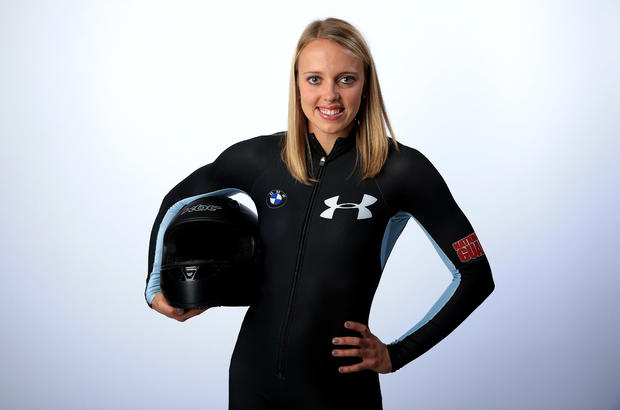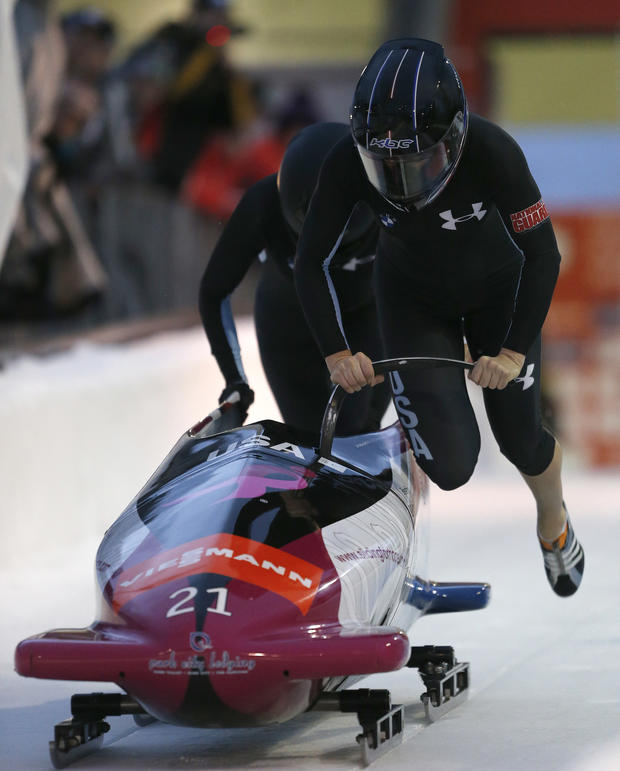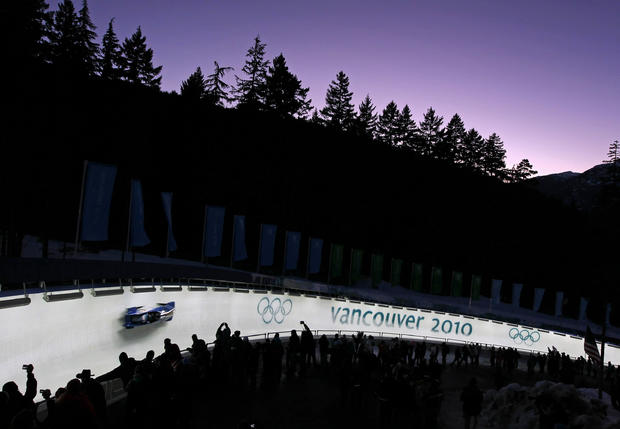Gregg: The 90-MPH Rush of Bobsled
In preparation for the upcoming Winter Olympics in Pyeongchang, South Korea, WBBM's Rick Gregg spoke with experts in each of four sports in a series of interviews for WBBMNewsradio.com. Today: Katie Eberling, a Palos Hills native and alternate to the 2014 US Olympic Bobsled Team.
CHICAGO (WBBM NEWSRADIO) -- "It's way more violent than you'd ever expect."
Katie Eberling is recalling the first time she climbed to the top of the Mt. Van Hoevenberg Olympic Bobsled Run in Lake Placid, New York.
"Basically I just remember being thrown against the side of the sled, and you're in that bent-over position, so it's incredibly hard to breathe. There's drool involved...you're being completely compressed, and just kind of thrown around. It's like being, I've heard, thrown in a trash can and kicked down the side of a hill."
And yet, she climbed out, hoisted up the sled, and tried it again.
"I was absolutely curious for more, and that's what allowed me to take trip two. That feeling that's like nothing else," Eberling said.
An injury forced Eberling to retire a few months ago, so she'll be a spectator for the 2018 Games in South Korea. Here are three things she'll be looking for as teams slide down the track:
-- The Start. That's the initial running push the athletes get before the hill crests.
"That's where all the acceleration is found," Eberling said, "and there's really no way to gain force down the track. Gravity's the same for everyone. Whatever your start advantage is at the top, you should be able to multiply that by three, and that should be your advantage at the bottom. So the start is incredibly important."
-- The Load. That's when the athletes actually jump in the sled.
"You want to be able to add speed to the sled as you're jumping into it. Sometimes you'll have a really good start time, but the velocity won't be good, because the athletes are actually pulling on the sled to get in. So you want to load the sled at the perfect time, where you're adding speed to the sled," she said.
-- The Line. That's the path the pilot takes down the track.
"A lot of people would think that the shortest distance between two points would be a straight line, but that's not necessarily true in bobsled, because you can create a lot of friction on the ice. The runners can cut a lot of ice by trying to force that perfect line," Eberling said.
And only the best can find that perfect line, because it's not like they get many trips down a given track to test things out.
"Bobsled pilots only get two minutes of practice a day," Eberling said, "which is unbelievable compared to other sports. We get two runs down the track a day. With those variables, and with the limited time, studying the track and visualizing the track become very, very important."
In all, Eberling said the Olympians in South Korea will likely have gone down that track fewer than 20 times, including earlier World Cup events, before the runs begin to count. They'll spend the rest of their days getting the sleds in perfect condition, because every millisecond counts. In Sochi, for example, the gold and silver medal teams in two-woman bobsleigh were separated by just one-tenth of a
second - after four runs!
"You want to have every possible advantage," says Eberling. "The most minor error can allow the sled to crash, or allow the sled to slow down, losing that start advantage that you gained at the beginning."
Eberling will watch the Pyeongchang Games from home, cheering on Team USA - including Chicagoan Aja Evans, who won a bronze medal in 2014 and hopes to push her way to more hardware this year.








